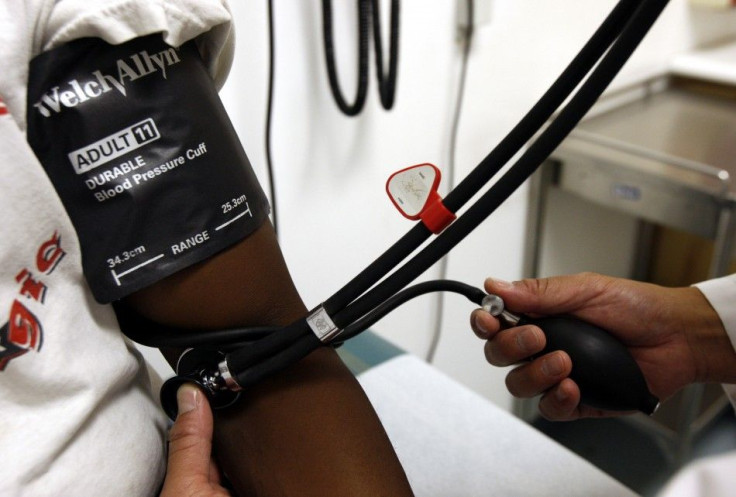May: National High Blood Pressure Education, Stroke Awareness Month, Tips On Managing Hypertension

Did you know that May is both National High Blood Pressure Education Month and Stroke Awareness Month?
Well, chances are you know someone who has high blood pressure, or hypertension, a condition that 67 million Americans have. That’s one in three U.S. adults who have to watch their blood pressure -- which can lead to strokes -- the nation’s fourth leading cause of death.
According to the Centers for Disease Control and Prevention, more than half of those people who have unhealthy blood pressure do not have their condition under control.
“Helping Americans with high blood pressure get it under control to reduce strokes and other forms of cardiovascular disease is a high priority for the U.S. Department of Health and Human Services,” HHS Secretary Kathleen Sebelius said in a Thursday press release.
“And through our national Million Hearts initiative, we are making a difference. Co-led by the Centers for Disease Control and Prevention and the Centers for Medicare & Medicaid Services --and in collaboration with many other government and private partners -- we aim to prevent 1 million heart attacks and strokes by 2017.”
Blood pressure is considered normal when the systolic pressure (the higher number) is less than 120 mmHg and the diastolic pressure (the lower number) is less than 80 mmHg.
Those who are considered to have “prehypertension” have a systolic pressure between 120 and 139 and a diastolic pressure between 80 and 89. People who have a blood pressure of 140/90 or higher have hypertension.
Only 16 of the 67 million adults know that they have high blood pressure and are getting treatment, although their blood pressure is higher than it should be.
The CDC offers this advice for controlling blood pressure:
1) Get informed by asking your doctor what your blood pressure should be. Work with him or her to understand and maintain your blood pressure goal.
2) Take your blood pressure medication as directed by your doctor.
3) No smoking.
4) Cut back on your sodium intake.
The Mayo Clinic points out that a healthy lifestyle plays an important role in managing your blood pressure and that it may avoid, delay or even reduce the need to take prescription drugs.
The clinic adds these other tips:
1) Exercise regularly; 30 to 60 minutes most days will do the trick.
2) Adopt a healthier diet by keeping a food diary, increasing your potassium intake and grocery shopping smarter.
3) Don’t drink a lot of alcohol; in good amounts, it can lower your blood pressure but too much won’t help.
4) Cut back on coffee; although this is debatable, according to the clinic, caffeine can cause a temporary spike in blood pressure. Check your pressure within 30 minutes of having a cup of coffee and if it’s up five to 10 points, consider cutting back.
5) Reduce stress.
HHS Secretary Sebelius points out that annual costs of high blood pressure are $156 billion and annual stroke costs are more than a billion dollars a week for the nation.
“Million Hearts is working to reduce high blood pressure with a one-two punch,” Sebelius said.
“The first, focusing health care professionals, health systems, insurers, employers and individuals on the link between good blood pressure control and good health. The second, encouraging all Americans to know their blood pressure, monitor it regularly, and talk with their doctor, nurse, pharmacist, or community health worker about how to keep it in the normal range. From diet and physical activity to medications, there are easy, effective and economical ways to measure, routinely monitor, and control blood pressure.”
To learn more about high blood pressure and what you can do to get informed and take control, visit the Centers for Disease and Prevention website.
© Copyright IBTimes 2025. All rights reserved.






















